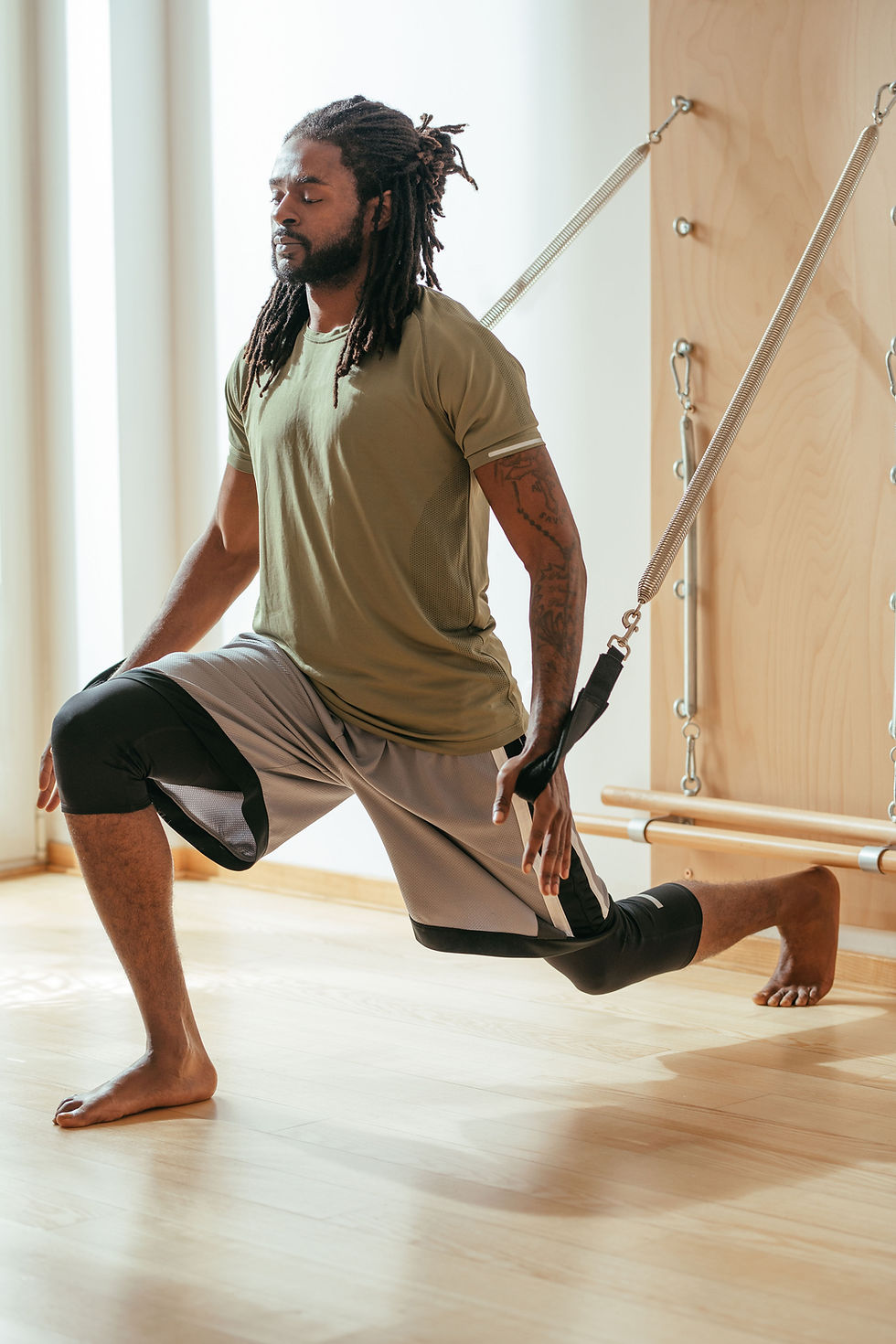Oral Microbiome, Semaglutide, and Smart Rings: A Roadmap to Longevity
- Obinna Eleweanya
- Jul 29
- 5 min read

The road to a longer, healthier life is suddenly buzzing with three deceptively simple ideas: brush smarter, jab wisely, and wear a ring to bed. Behind those slogans sits a mountain of new evidence about the oral microbiome, the GLP-1 drug semaglutide, and next-generation smart rings—all converging on the same destination: sustainable healthspan.
A Forgotten Gateway
Picture the first sip of coffee at dawn. Before that liquid reaches your gut, it first passes 700+ microbial species camped along gums, tongue, and enamel. For decades, dentistry treated this community as a local concern—until stroke neurologists noticed something odd: clot samples pulled from cerebral arteries often teemed with exactly the same dental bacteria that inflame bleeding gums.
One review of stroke thrombi found Streptococcus DNA in 78.9% of samples and Porphyromonas gingivalis in 33.7%. A separate Mendelian randomization analysis tied several oral microbes including Prevotella nanceiensis and Streptococcus mitis to odds of living longer than 90 years. The message is stark: the mouth is not Las Vegas; what happens there rarely stays there.
Bleeding gums, therefore, do more than threaten a bright smile; they may shave years off cognitive health. A Southampton King’s College cohort reported that people with early Alzheimer’s who also had periodontitis declined in memory six times faster across six months. In 2022, researchers found P. gingivalis enzymes (gingipains) in the tangled proteins that are a sign of dementia. No wonder epidemiologists now plot gum disease prevalence on the same risk maps as hypertension and smoking.
Brushing Up on Longevity
Fortunately, oral ecosystems respond quickly to small nudges. A Chinese survey of adults aged 55-102 found that lifelong survivors harboured more Streptococcus salivarius a probiotic species that keeps inflammatory pathogens in check. Daily fluoride brushing, nightly flossing, and a green-tea rinse rich in catechins can tilt the balance toward such allies. Most persuasive is data that simple flossing at least once per week coincides with a 21% drop in ischemic-stroke incidence across large registries. In other words, the cheapest “longevity drug” may still cost less than a box of dental tape.
The Miracle & Its Shadow
If the mouth illustrates how small routines compound quietly, semaglutide illustrates what happens when biotechnology pours rocket fuel on weight loss. The SELECT cardiovascular-outcomes trial tracked 17,604 adults without diabetes for 4 years and delivered two headline numbers: a sustained 10.2 % weight reduction and a 20% cut in major adverse cardiovascular events. Health economists estimate that nearly 500,000 heart attacks, strokes, or CV deaths would be prevented over the next decade if every eligible American filled out a WeGov prescription.
Yet the miracle has a shadow. Across trials, 14–40% of total pounds shed came from lean tissue, not fat. In older adults already losing 1% of muscle per year, that erosion can spell sarcopenia, frailty, or even impaired swallowing that loops back to poor oral hygiene. The Muscle node of the Triad framework provides a crucial intervention in this situation.
The Muscle Shield
Two interventions blunt semaglutide’s lean-mass penalty. First, spread 1.6–2.2 g of protein per kilogram of body weight across three meals daily; STEP-1 sub-analyses showed participants following this threshold maintained a slightly higher proportion of fat-free mass. SSecond, lifting heavy weights during twice-weekly full-body resistance sessions preserved up to 50% more lean mass in users of GLP-1 medications compared to peers who did not train, according to interim COURAGE data and multiple gym-based observational studies. Grip-strength checks once a month work as an early-warning sensor: a 5% decline predicts functional frailty within 18 months, long before it shows on the bathroom scale.
Leaner ≠ Weaker
It pays to remember that not all “lean loss” is muscle. Early semaglutide detractors cited the 40% figure from the STEP 1 dexa scans; later re-analyses clarified that a third of that lean mass was extracellular water and organ fat, not contractile protein. After 68 weeks, participants’ proportion of lean tissue relative to total weight actually rose from 53.9% to almost 57%. Therefore, although the drug reduces muscle mass, it also results in increased metabolic density for users—but only if they combine it with proper nutrition and resistance exercise.
Rings That Whisper While You Sleep
Where the mouth sends microbes downstream and semaglutide reroutes hormones, the Mind pillar deals in electricity. Brain waves change when we surrender to sleep, and thanks to photoplethysmography—tiny LEDs pulsing beneath the skin—smart rings now read those rhythms at the fingertip. Validation work shows the Oura Ring nails nightly average heart rate within 0.3 beats and HRV (rMSSD) within 3 milliseconds of electrocardiograms.
Newer rivals go further: Happy Ring secured FDA clearance in June 2025 to screen for sleep apnea via pulse oximetry and skin-temperature shifts; Samsung’s titanium Galaxy Ring tosses in seven-day battery life and a concave, scratch-proof chassis.
Why does any of this matter to lifespan? Because autonomic recovery markers—HRV, resting heart rate, breathing variability—rank among the strongest non-invasive predictors of all-cause mortality. A meta-analysis covering 230,000 adults found those with the highest HRV enjoyed a 30% lower risk of cardiac death.
The hard part has always been measuring HRV outside a lab. Finger-worn optics solve that and invite habit loops: bedtime “digital dusk” reminders, nudge notifications when late-night Netflix bumps readiness scores, and AI-generated coaching that adapt chrononutrition windows so the last calorie lands at least three hours before the first REM cycle.
From Numbers to Behaviour
Data alone rarely transforms behaviour; context does. A 12-month lifestyle-coaching trial that coupled HRV-ring feedback with weekly tele-coaching nudged participants to lengthen deep-sleep blocks by 34 minutes while shaving 4 beats off resting heart rate. Average HRV rose 11%, enough to clear the minimal detectable change threshold and cut perceived stress scores by a third. Notice the compounding chain: calmer nights lower cortisol, which eases muscle protein breakdown, which in turn preserves lean mass during semaglutide therapy, which circles back to better metabolic control of the oral microbiome. The Triad becomes an ecosystem, not a flowchart.
The Fifteen-Minute Sprint
For readers craving a start line rather than statistics, here is a micro-protocol that hits all three pillars inside a quarter-hour:
After dinner, floss and rinse with unsweetened green tea to swamp gum pathogens with catechins.
Drop to the living-room floor for two sets of 15 air-squats and 10 incline push-ups—enough mechanical tension to remind fast-twitch fibres they are still wanted.
Step onto the porch and let dawn or dusk light hit retinas for three minutes; circadian photoreceptors reset melatonin release and boost nighttime HRV.
Repeat daily for 30 days. Track changes in gum bleeding, grip strength, and ring readiness scores; odds are at least one metric will shift in the right direction before the month ends.
Translating Science into Self-Care

The deluge of podcasts, TikTok reels, and venture-funded press releases can make longevity feel like a subscription service reserved for billionaires. The truth remains humbler. Most of the benefits documented above—21% stroke-risk dip from flossing, 5 ms HRV gain from ring-guided sleep hygiene, half-million MACE events avoided through semaglutide—originate from decisions that fit inside ordinary life. Even the $300-plus smart ring pales next to hospital bills for unmanaged apnea or uncontrolled diabetes.
Yet integration is everything. Ignore oral health and mouth-born bacteria may ignite the vascular inflammation semaglutide tries to extinguish. Skip resistance training and weight-loss shots risk hollowing the very muscle you need to chew fibrous vegetables or stand up unassisted at 80. Neglect sleep architecture and cortisol will sabotage both appetite hormones and immune patrols that police gum tissue. Mouth, Muscle, Mind: break one leg and the tripod wobbles.
A Call to Action
If this narrative sparks curiosity, consider upgrading one pillar today. Book a periodontal check-up; download an evidence-based strength app; borrow a friend’s smart ring for a weekend demo. Then, share your baseline and follow-up numbers with our Triad Longevity Academy community (newsletter signup at the bottom of this page). Biology loves feedback loops; so does behaviour change.
Tomorrow’s longevity breakthroughs may arrive via CRISPR tweaks or senolytic cocktails, but until then, floss, flex, and fall asleep to the whisper of a titanium ring. The science already in your pocket—and on your fingertip—can add healthy years right now, one microbe, one muscle fibre, and one heartbeat at a time.









コメント